por Cristina Gamboa
I was born and raised in the Central Valley of CA (close to eastern side of the Sequoia national park). My earliest and fondest memories of being outdoors are camping with my family every summer for as long as I can remember. If I imagine hard enough, I can still smell my mom making homemade tortillas at 5am in the morning to make papas and huevo taquitos for us to take on the road before we headed off in a VERY packed car. I come from very humble beings and we were not able to travel as many families do over the holidays and summer months. To be honest, I didn’t really know that was a thing until I was older. For our family, I could always count on our weeklong camping trip in the summer to Lake Nacimiento. It was filled with mischief between my brothers and I and simple good fun as a family.
As I got older, being outdoors and taking on adventure has meant different things for me. While in college and in graduate school, being outdoors was an inexpensive way to continue to see the world around me. It has allowed me to make some amazing friends, see some amazing places, and I loved to feel like I was taking my family with me by sending them postcards from my travels. After hearing of my trips my mom would (and still does) respond with “aye mija, que bonita”. I felt proud to show them the places I was going.

“The majority (90%) of my patients are Latinx and many farmworkers. It is hard for them to find time to be outdoors for leisure. After a long day working in the fields the last thing they can imagine doing is being outdoors “for fun”.
Now, as a physician being outdoors has become a necessary means to decompressing. I like to think of it as my place to recharge and hiking as my moving meditation. Of course, my to do lists creep into my head but mostly I am able to appreciate the beauty around me and return to work refreshed to care for my patients.
Currently my husband and I are in Utah. He’s remote teaching and I’ve been getting into solo mischief in the Slot Canyons for Escalante Grand Staircase and doing day hikes in Bryce NP.
There are so many health benefits to being outdoors. I practice in Watsonville, CA as a Women’s Health physician. Obesity is on the rise in young women and Latinx community in general. I routinely encourage my patients to be more active. The majority (90%) of my patients are Latinx and many farmworkers. It is hard for them to find time to be outdoors for leisure. After a long day working in the fields the last thing they can imagine doing is being outdoors “for fun”. But I encourage them to do what they can and find a housemate to go for a walk with and catch up.





